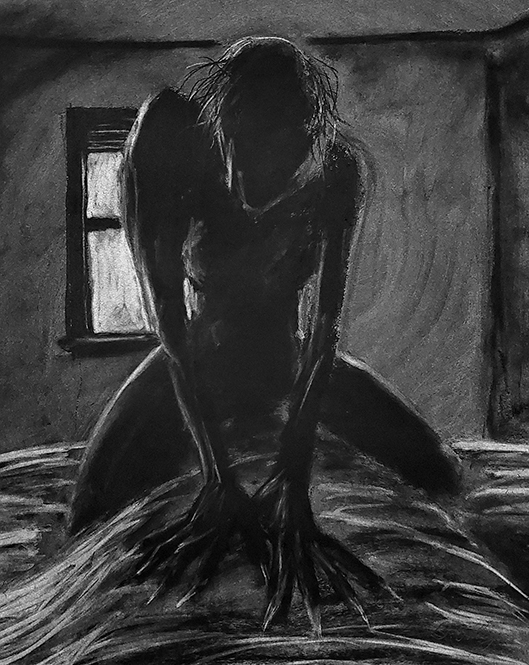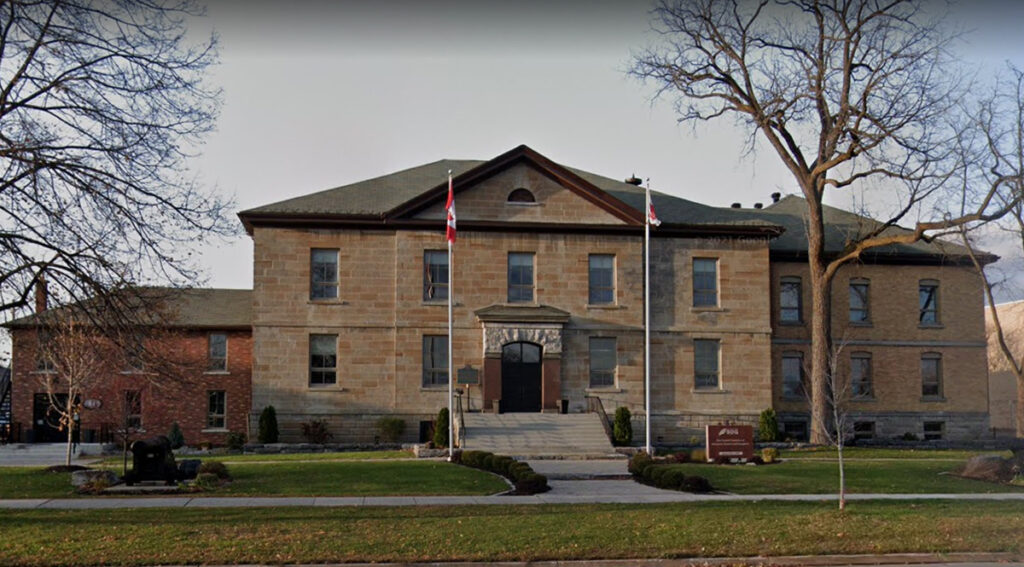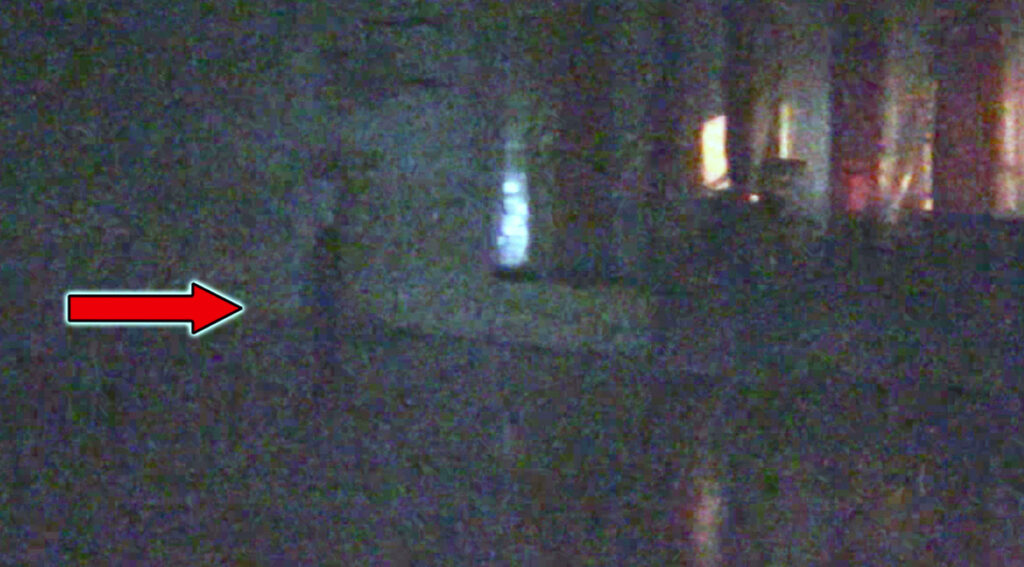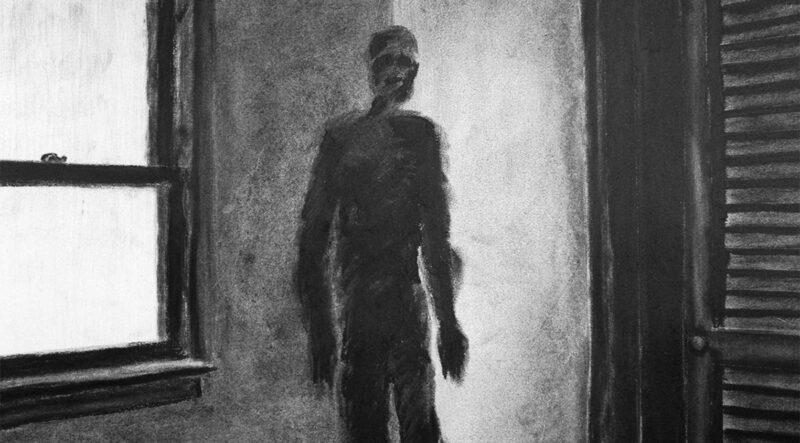When founder and lead investigator of Pandemonium Paranormal, Anton Buchberger, left Pembina Hall at the University of Alberta one 2013 evening, he never expected to feel an itchy sensation on his arm.
He was taken aback when he discovered a scratch mark.
“On an investigation, I am always careful not to scratch myself, not touching myself, always to avoid contamination,” he recalled, during a November phone conversation. “Yet, 10 minutes after I left, I was able to take a picture of it.”
Throughout his investigation of the University of Alberta campus, he witnessed dark figures.
“I did witness a couple of shadow people walking across the hall,” he said. “I was unable to capture any on video or photo, but I came across them while I was going through the building.”
It was a disturbing moment for Buchberger, he admitted because it was the only time he had experienced the phenomenon during an investigation.
But it had prompted him to dive deeper into researching the paranormal phenomenon of shadow people.
“For me, the theory of sleep paralysis and shadow people doesn’t hold its ground,” he said. “I know that in my case when I came across the shadow person, it was the middle of the day. Most of the other experiences that I’ve read were during the day.”
Shadow people aside, Pembina Hall has an intriguing past. It was used as an infirmary during the Spanish Influenza, and according to the university’s website, it housed more than 300 patients in 1918.
It was on par with the current COVID-19 pandemic, with mask orders in place on public transit, as well as cancelled church services.
During that time, Pembina Hall became a community, with U of A faculty and staff, as well as students volunteering to cook meals and provide comfort to those patients in isolation inside the building. Alberta was experiencing a shortage of nurses at the time, so some staff members, including Athabasca Hall’s custodian James Collins and senior housemaid Lena Miller, chipped in to help with the nursing duties.
Many died during the pandemic, including the university’s founding engineering professor William Muir Edwards, who had been tending to the sick and helped carry the dead out of the facility.
So much death in one location can leave a mark. If the theory that great trauma brings with it restless spirits holds, then Pembina Hall could be home to many who are not at rest and suffered greatly leading up to their death.
“The more trauma you have, the more chance you have of experiencing spirits and possibly shadow people,” Buchberger said. “It would make more sense that shadow people would be more present in a traumatic area.”
A fresh perspective

Shadow people have been linked to the
phenomenon of sleep paralysis, often discussed
as the night hag.
Engage author and podcaster Mike Ricksecker in a conversation about shadow people and he’ll channel his knowledge of past and present cultures to discuss the world’s interpretation.
The Cleveland, Ohio-based writer and researcher has been intrigued by shadow people since his brush with the paranormal when he was eight. So much so, he produced a television docuseries on the phenomenon, “The Shadow Dimension”.
“I’ve had a lot of personal experiences,” the 48-year-old said. “That’s how I got into this field.”
His first paranormal experience was with a shadow entity when he was eight.
“I woke up in the middle of the night and there in the corner of my bedroom was this tall, dark figure,” he recalled. I had no idea about shadow people or anything like that. I thought there was an intruder in the house and he was about to kill me.”
The figure approached Ricksecker’s bed, and he was too terrified to scream out. It leaned over and all he saw was a black void. It took him by the wrists and folded his arms across his body and ran down the hall.
Once Ricksecker was able to collect himself, he shot off to his parents to share his experience, which was quickly dismissed as just a nightmare.
He had a second experience when he was 13. He had just moved into a new house and unpacked his belongings. He saw what appeared to be a translucent person standing in his doorway.
“It was a little bit different than the one that I saw when I was younger,” he recalled. “I could see a head. I could see shoulders and the body and if I turned to look at it, it would take off.”
He asked his mother about this new experience, and she had also seen the same entity.
“She was rather nonplussed about it. She said nonchalantly, ‘Oh yeah, I’ve seen that too.’” he said. “So, it didn’t cause any alarm in me. I was like, ‘Oh, okay, mom seems to be okay with this. She’s seen it too.’”
Ricksecker would refer to the entity as Tom, as in a peeping Tom because he would occasionally see it peer into his bedroom. After four months, the activity subsided.
Shadow people are a phenomenon that has been reported for over a thousand years. Ricksecker points to the Sumerian culture’s vengeful spirit, Alû. He had no facial features or limbs and hover over people at night, causing sleep paralysis.
In Sumerian folklore, people would invoke a good demon to do battle with an evil demon.
Ancient Egyptians believed there were many parts to a soul. The Ka, or vital essence, would remain behind like a shadow and roam the Earth. There was also the shut or shadow, which would be the shadow of a former person.
Ricksecker also pointed to Choctaw beliefs where a person has shilup or spirit and a shilombish or shadow that may remain on the Earth.
The risk that Ricksecker is concerned about is how the mythology gets blended in with the men in black phenomenon and man in the hat.
“I think we tend to westernize that a little bit more because they tend to get enmeshed with the whole phenomenon as well,” he said. “A lot of the men in black are just shadowy government agencies, primarily in the United States.”
In Canada and the United States, there have been different types of shadow entities reported. Typically, it appears as a standing black form, but Ricksecker has noted they can take the form of a rolling black smoke or mist. There are also crawlers, which have long arms and legs.
“All those are classified as shadow-type entities,” he said. “When it starts to get into the realm of ghosts, hauntings and spirits, those are more like your standard apparitions.”
The dividing line between a shadow person and a ghost is if there are more defined features. With the shadow figure wearing a fedora or top hat, it’s only the silhouette.
“It’s just like the outline of it,” Ricksecker said. “It just as if somebody took a black piece of paper and cut out a figure and that was it.”
His investigative experience has led him to experience a rolling black smoke that took the shape of a little girl in a historic hotel.
Ontario’s experiences

The Historic SDG Jail is located in Cornwall, Ont. and has provided investigators plenty of evidence paranormally speaking.
Other locations in Canada that have experienced their fair share of hauntings and shadow figures are L’Orignal Jail in L’Orignal, Ontario, as well as the Historic Stormont-Dundas-Glengarry (SDG) Jail in Cornwall, Ontario.
The two historic jails in the Eastern region of Ontario are two of the oldest in the province. They are relics of the early days when incarcerating prisoners had limited regulations.
Providing ghost walks of the locations are Phantoms of Yore co-founders Elliot Luijkenaar and Eric Oickle. They launched the organization in March 2018 to assist in the preservation of historical sites and help facilitate paranormal investigations.
L’Orignal Jail was built from 1824 to 1825 and closed in 1998. It is the second oldest jail in Canada. The Historic SDG Jail was constructed in 1833 and remained open until 2002. It served as an asylum, a house of refuge and as a courthouse.
Both locations have a steady stream of alleged paranormal events, Luijkenaar said during a video interview in November 2021, but it’s L’Orignal that is more closely tied to shadow people’s sightings.
“There are experiences of shadow people at the Cornwall jail, but nothing like we’ve captured at L’Orignal jail,” he said.
On one particular tour at Historic SDG Jail in 2019, Luijkenaar and his team were giving a tour and had locked individual patrons into cells by themselves. While the pretend guards — Luijkenaar and his team — walk away. Patrons can yell at the guards and insult them to experience what it would be like to be sent to solitary. The idea was to raise the energy of the jail if they misbehave.
Usually, Luijkenaar will walk away while Oickle tapes the patrons with an infrared camera. But on this particular day, as Luijkenaar walked around he came across a solid black mass. It was a foot shorter than his six-foot-five frame.
“It was just standing dead centre in the cell outside of the oldest cellblock: 33,” he said. “Being shocked by this I just walked by it slowly, staring at it. It almost seemed like it was staring back at me.”
He stepped into the next cell block and continued his roleplaying. The same happened to Phantoms of Yore member Cory Wyatt. He had shared his encounter in November 2021 with Luijkenaar, describing a five-foot-six mass standing in the doorway watching him.
“He said he didn’t have a feeling of panic or anything. He just kept walking,” Luijkenaar recalled. “It was a very strange feeling of calm, which was unusual.”
The sightings of shadow figures at the Historic SDG are joined by the sighting of a lady in black, but she is a full-bodied apparition and not associated with the solid masses. Voice anomalies are also common.
During the construction of the northern portion of the jail, workers discovered human remains. Two of the bodies were of Henry Seguin and Peter Balcombe, two murderers who were sentenced to hang in the jail. Seguin cheated the noose by suicide in 1954.
In total five men were executed at the Historic SDG: Clark Brown (1879), James Slavin (1892), John Vergryniuk (1919), Thomas Collison (1925) and the aforementioned Balcombe (1954).
There were five men sentenced to hang at L’Orignal. The first was Frederick Mann, who was found guilty of killing four members of the Cook family in Little Rideau in 1883. Narcisse Larocque, who served time at L’Orignal, was hanged on June 4, 1891, for the murders of tweenagers Eliza and Mary McGonigal. Clement Goyette went to the gallows in 1904 for the murder of Daniel Colligan and his son Thomas. Emmanuel Lavictoire and William Larocque were the last two men to hang in 1933. The two murdered farmhand Leo Bergeron.
Another inmate, Joseph Menard, had a grisly backstory where he was found not criminally responsible for the murder of his wife with an axe. He attempted to turn the axe on himself but was not successful in killing himself. Instead, he was left with a hole in his skull.
While imprisoned he was to be cellmates with Clement Goyette, but Menard refused. He found a metal spike and drove it into the hole in his skull.
When it comes to spirits, the daughter of former warden Felix Millette is suspected to be walking the halls, much like she did when her father worked at L’Orignal.
Apparitions, ghosts and disembodied voices are the go-to for the Phantoms of Yore team members, but shadow figures pose an interesting challenge to their beliefs.
“Shadow figures are interesting because they make you wonder,” Luijkenaar said. “I’ve never seen a full apparition when I was young, but I’ve seen a ghost, which was a white entity.
“When I saw the shadow figure, it’s the absence of light,” he added. “It’s not a shadow. It’s just a black, solid mass. Well, what does that mean? An absence of light? Who knows what the hell it is?”

L’Orignal Jail, in L’Orignal, Ont., has had plenty of sightings of shadow people.
The mystery of shadow people continues
Shadow people continue to hold a captive audience with members of the paranormal community.
From the figures that haunt our nightmares and cause sleep paralysis to the shapes that skulk around abandoned locations and places of great suffering (asylums, hospitals, prisons), they invoke a need for an explanation.
“There are a lot of different things as to what they could be,” Ricksecker admitted. “We’ve talked about the possibility of them being human spirits and many of them are.”
Other theories have shadow people being extraterrestrials that are travelling inter-dimensionally. There’s also the idea of time slips — people will see a shadow or doppelganger — and years later they experience the event from a different viewpoint.
He explores the topic in more depth in his book A Walk in the Shadows, which was published in 2020.
The experiences of Buchberger, Ricksecker and Luijkenaar have all had that human-shaped black mass as a consistent theme throughout. It’s tugged at their curiosity as to what it could be.
Scientific explanations have used psychological or physiological symptoms such as hallucinations to explain away shadow people, but some are left wanting more.
“It’s still a dark subject,” Buchberger said. “We don’t know a lot about it. There are lots of options to learn more about it.”

Mike Ricksecker snapped a photograph of a shadow figure during the investigation at a former school in Illinois.

